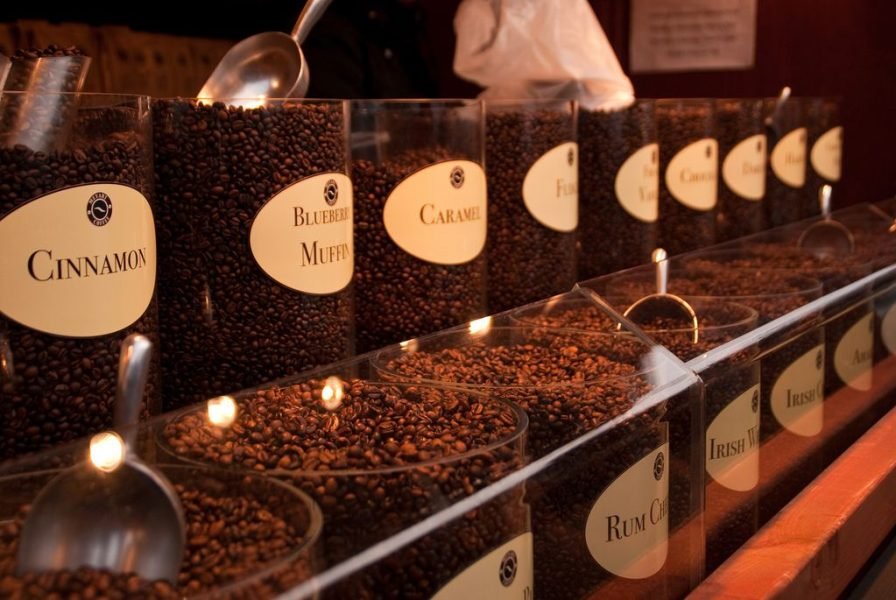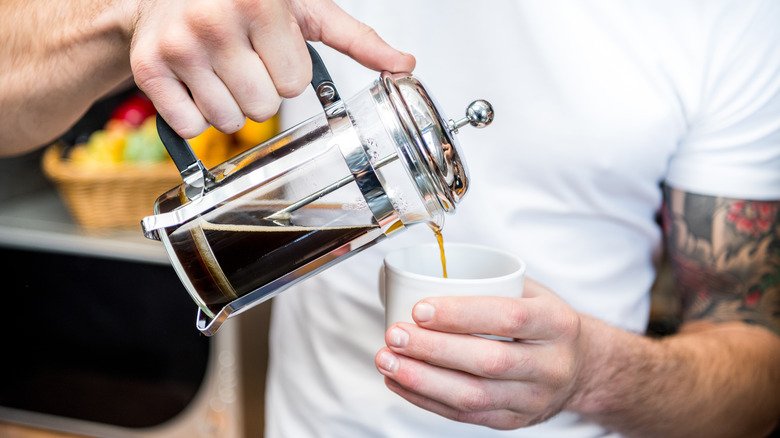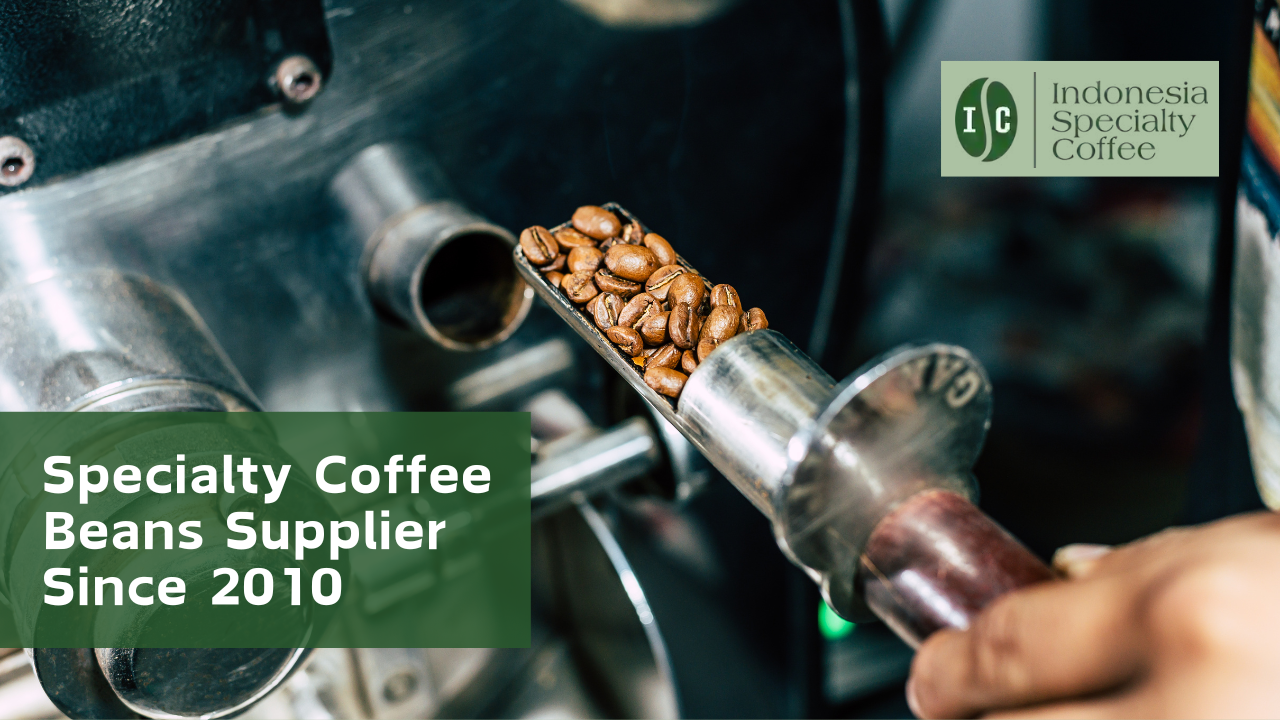Coffee enthusiasts often find themselves facing a conundrum: does coffee go bad, and is it safe to drink Coffee expired? Fortunately, the good news is that coffee doesn’t truly “go bad” in the traditional sense. You won’t find mold growing on your coffee grounds or beans, and drinking coffee made from aged beans won’t harm your health. However, the taste may suffer as time progresses.
The Good News: Coffee’s Resilience and Safety
In the realm of consumables, the news about coffee is particularly good—no, it doesn’t “go bad” in the conventional sense that often plagues perishable items. Coffee beans and grounds, unlike a loaf of bread or a piece of fruit, don’t succumb to mold or bacterial growth. Remarkably, even if the expiration date on the packaging has come and gone, sipping on coffee brewed from aged beans won’t send you rushing to the emergency room. So, rest assured, your morning ritual isn’t a perilous affair.
Does Coffee Expire? The Resilience of Dry Coffee Grounds and Whole Beans
The resilience of coffee lies in the fact that dry coffee grounds and whole beans can endure the test of time without undergoing the typical processes of spoilage. Unlike other food items, coffee doesn’t rot or go bad in the traditional sense. This resilience is particularly evident when dealing with dry coffee grounds and whole beans, which, when kept in their pristine, unbrewed state, remain impervious to the molds and bacteria that often cause food to spoil.
The Small Caveat: The Aging Dilemma
While coffee might be immune to bacterial infestations and the ominous green fuzz that befalls expired bread, there’s a nuanced caveat to consider—aging affects the quality of coffee. Once those grounds come into contact with water, an irreversible transformation begins. Wet coffee grounds, left over from yesterday’s brew, can’t be resurrected into a satisfying cup the next morning. Furthermore, a pot of brewed coffee, if left languishing for an extended period, can indeed go bad, introducing the uninvited guest of mold. The natural oils present in coffee, integral to its rich flavor profile, can turn rancid over time, leading to a taste that is, let’s say, less than stellar.
Quality Matters: The Impact of Time
The essence of the caveat lies in the acknowledgment that coffee, even though it won’t pose health risks, undergoes a gradual loss of quality over time. The chief antagonist in this scenario is oxygen. Freshly roasted coffee beans and grounds, brimming with flavor and intensity, gradually succumb to the degrading effects of exposure to air. The once vibrant notes in your coffee start to fade, and what was once a robust and aromatic cup begins to mellow into a shadow of its former self.
The Timeline: Enjoying Coffee at Its Peak
To truly appreciate the good news and navigate the small caveat, it’s crucial to understand the timeline. While coffee won’t technically go bad, it’s recommended to consume it within a specific timeframe. Ideally, whole beans should be savored within three to four weeks of purchase, ensuring you experience the peak of their flavor profile. For ground coffee, the timeline shortens to a mere two weeks, emphasizing the importance of swift consumption to preserve that fresh and invigorating essence.
In essence, the good news prevails: coffee is a resilient beverage, and even when it ages, it won’t jeopardize your well-being. The small caveat serves as a reminder to savor your coffee at its zenith, to revel in the rich tapestry of flavors before time inevitably takes its toll. So, while your coffee might not “go bad,” it’s a journey best embarked upon sooner rather than later for the purest and most delightful experience.
Oxygen: The Culprit Behind Coffee’s Aging Symphony
In the delicate dance of maintaining the peak freshness of coffee, oxygen emerges as the formidable antagonist, orchestrating a symphony of changes that can transform a vibrant cup into a muted echo of its former self. Understanding the role of oxygen in the aging process is pivotal for coffee aficionados who seek to savor every nuanced note in their morning brew.
The Vulnerability of Freshly Roasted Coffee
Freshly roasted coffee beans and grounds are akin to a time capsule, encapsulating the complex and volatile compounds that contribute to the beverage’s exquisite flavor profile. Yet, this encapsulation is precarious, as the natural pores in the coffee structure allow oxygen to infiltrate the sanctity of these compounds.
Oxidation: A Silent Culprit
Oxidation is the silent thief responsible for robbing coffee of its freshness. When coffee comes into contact with oxygen, a cascade of chemical reactions is set into motion. The volatile oils, responsible for the aromatic and nuanced flavors, begin to break down. The once vibrant compounds, intricately interwoven, start to lose their luster, resulting in a gradual diminishment of the overall flavor and aroma.
The Impact on Flavor and Intensity
The swift and irreversible consequences of oxygen exposure manifest most notably in the diminishing intensity and richness of the coffee. The initial boldness, the intricate dance of acidity and sweetness, and the aromatic crescendo—these are the elements that make a freshly brewed cup memorable. Unfortunately, oxygen disruption distorts this symphony, turning the vibrant notes into a muted composition.
Storage as a Defense Against Oxygen Onslaught
Given the relentless assault of oxygen, the battle against its effects is waged on the storage front. Properly storing coffee becomes an act of defense, a shield against the insidious influence of this reactive gas. Whether in the form of whole beans, ground coffee, or convenient pods, the common denominator is the imperative need for an airtight sanctuary.
Whole Beans: Encased in Vigilance
Whole beans, with their extended shelf life, provide coffee enthusiasts with the luxury of time. However, this respite is contingent upon a vigilant approach to storage. An airtight container, whether the original packaging with excess air expelled or a purpose-designed vessel with a vacuum pump, becomes the fortress against the encroaching oxygen. Shielding these beans from heat and sunlight adds an extra layer of protection against premature aging.
Ground Coffee: A Battle Against Time
For the more time-sensitive ground coffee, the storage principles remain aligned with whole beans. The enemy here is not just oxygen but time itself. The airtight container, safeguarded against heat and light, becomes the bastion against the relentless march of oxidation. Swift consumption within the suggested two-week window becomes not just a recommendation but a crucial strategy in preserving the coffee’s peak flavors.
Coffee Pods: A Sealed Defense
Single-serve coffee pods, though already sealed, are not exempt from the oxygen challenge. While the sealing mechanism provides initial protection, transferring these pods to an airtight container further fortifies their defenses against the gradual infiltration of oxygen. Here, the battle is not just against flavor degradation but also against the loss of that concentrated potency that defines pod-brewed coffee.
The Ever-Present Oxygen: A Reminder of Coffee’s Ephemeral Nature
In essence, the relentless pursuit of fresh coffee is a battle against time and oxygen—a dance with ephemeral flavors. Understanding that coffee won’t truly “go bad” but will, over time, lose its vibrancy is the first step in this journey. Oxygen, the stealthy adversary, highlights the transient nature of the coffee experience, urging enthusiasts to savor each cup as a fleeting masterpiece. It’s a reminder that the freshness of coffee is a delicate equilibrium, and in this dance with oxygen, the symphony of flavors can either be preserved or lost to the ages.
Storing Coffee: A Crucial Factor for Flavor Preservation
Ensuring the longevity and freshness of your coffee is not just about the passage of time; it’s about how you store those precious beans. Proper storage is pivotal in retaining the nuanced flavors and aromatic qualities that make each cup a delightful experience. Let’s delve deeper into the art of storing coffee, exploring the best practices for different formats—whole beans, ground coffee, and coffee pods.
Storing Whole Beans: Airtight Containers and Vigilance
Whole coffee beans have the advantage of a longer shelf life compared to their ground counterparts. The key here is to keep them in an airtight container. If you choose to use the original packaging, ensure that you expel all excess air before sealing it tight. An exemplary option is an airtight container equipped with a vacuum pump, such as the OXO Pop container. Additionally, protecting your beans from heat and sunlight is crucial, as these elements can accelerate the breakdown of flavors.
Storing Ground Coffee: Maintaining Freshness Amid Convenience
For those who opt for the convenience of pre-ground coffee, the principles of storage remain consistent with whole beans. An airtight container is your ally in preserving the freshness of the grind. This container should be stored away from heat and light, ensuring that each scoop yields the robust flavor intended by the roaster. While pre-ground coffee may sacrifice a bit of freshness compared to whole beans, proper storage can still offer a satisfying cup.
Storing Coffee Pods: Balancing Convenience and Quality
Single-serve coffee pods are a testament to modern coffee convenience. While they come in a sealed package, maintaining their freshness requires some consideration. Although these pods are already sealed, placing them in an airtight container provides an extra layer of protection against external elements. Keep them away from both light and heat to preserve the rich, concentrated flavors until you’re ready to brew.
Debunking Common Myths: Refrigeration and Freezing
The belief that refrigeration prolongs coffee freshness is a widespread misconception. Coffee beans are porous, absorbing odors in the refrigerator, which can lead to undesirable flavor notes. Moreover, the refrigerator’s dry environment can suck the moisture out of the beans, accelerating staleness.
While the freezer can be a friend to your coffee’s longevity, it requires precision. Place the original bag of coffee inside a Ziploc bag, expel excess air, and freeze. When ready for use, allow the beans to thaw completely before brewing. Remember, the freezer is a one-way journey—once thawed, avoid re-freezing, as the fluctuating temperatures can compromise the beans’ integrity.
Conclusion: Savoring Every Sip
In the world of coffee, where each cup is a unique journey of flavor, proper storage is the compass that guides you to the best taste experiences. Whether you’re a purist who cherishes whole beans, a pragmatist who opts for ground coffee, or a modern brewer using convenient pods, the principles of storage remain consistent. By shielding your coffee from the enemies of freshness—air, heat, and light—you ensure that every morning ritual is a celebration of the complex and aromatic notes that make coffee a cherished companion. So, store wisely and savor every sip.
Common Misconceptions About Coffee Storage
There’s a common belief that storing coffee in the refrigerator or freezer enhances its longevity. However, refrigerating coffee beans is not advisable. Coffee beans are absorbent, and they may absorb undesirable odors from the fridge. Moreover, the refrigerator can dry out the beans, causing them to go stale quicker.
While the freezer is a better option for prolonged storage, there’s a specific method to follow. Place the coffee in its original bag inside a Ziploc bag, remove excess air, and store it in the freezer. When ready to use, allow the coffee to thaw completely before brewing. Avoid putting the coffee back in the freezer after thawing, as rapid temperature changes can degrade the beans.
In conclusion, while coffee may not “expire” in the traditional sense, its quality diminishes over time. Proper storage is crucial to preserving the flavor and freshness of your coffee beans, ensuring that your morning brew remains a delightful experience.







